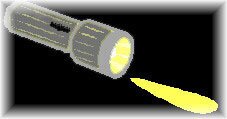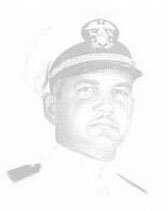 Dark Corners Menu |
 Pitzer Main Page |
 Dark Corners Menu |
 Pitzer Main Page |
 |
When the Truth is Not Enough by Allan Eaglesham |
|
While surfing the Net (January 11, 2004), I came across an account of LCDR Pitzer's death at
It is or was an entry on a page devoted to "mysterious deaths" ancillary to the Kennedy assassination. Most of it was lifted from the Pitzer Main Page and from the first article, "The Untimely Death of Lieutenant Commander William B. Pitzer: The Physical Evidence," on the Web site you are now reading. I have no quarrel with that -- nothing is copyrighted here -- although it would have been common courtesy to acknowledge the source authors and it would have been appropriate to provide the URL for this site so that the interested reader would have the opportunity to read more on the matter. I suspect, however, that the person(s) responsible for placing the passage on Media News hopes that no one will read the original source. Below is a comparison of the Media News version with its source passages. Sentences from this Web site have been cut and pasted together to provide a cohesive, nutshell version of the story. This has been done skilfully and fastidiously (e.g. "navy" was changed to "Navy"). However, some parts have been embellished, and one key phrase is completely fictitious, to emphasize the "conspiracy" aspect of the story. Clearly, the truth is not enough. [This modus operandi is reminiscent of a passage from Lieutenant Colonel Daniel Marvin's Web site in which he stated: "Dennis D. David, told me unequivocally, when I first spoke with him, that his friend William Bruce Pitzer was indeed left handed." With these words, Marvin was making the point that Pitzer must have been murdered because the fatal wound was to the right temple (which is true) whereas William Pitzer was left-handed, which was not true and Mrs. Pitzer herself had already informed Marvin of that fact.] Significant differences in the Media News version, and words notably ignored in the original passages are shown in red. |
|
Lieutenant Commander William Pitzer was a mentor to Petty Officer First Class Dennis D. David, and a friend; they played bridge together regularly. On the evening of November 22, 1963, Dennis was Chief-of-the-Day at Bethesda Naval Hospital, part of the National Naval Medical Center, and it was his duty to supervise the unloading of the casket that contained the body of President Kennedy prior to postmortem examination. Early in the following week, Dennis dropped by Pitzer office with questions on the professional exam for the Medical Service Corps. He found Pitzer working on a 16-mm film, slides and black and white photos of the Kennedy autopsy. |
Lt. Cmdr. Pitzer was a mentor to Petty Officer First Class Dennis D. David, and a friend; they played bridge together regularly. On the evening of 22 November 1963, Dennis was Chief-of-the-Day at Bethesda Naval Hospital, part of the National Naval Medical Center, and it was his duty to supervise the unloading of the casket that contained the body of President Kennedy prior to postmortem examination. Early in the following week, Dennis dropped by Bill office with questions on the professional exam for the Medical Service Corps. He found Pitzer working on a 16-mm film, slides and black and white photos of the Kennedy autopsy. |
|
This was not surprising since Pitzer was Assistant Head of the Graphic Arts Department and Chief of the Educational Television Division of the Naval Medical School, had a top-secret security clearance, and specialized in the then-new field of closed-circuit television. |
He was Assistant Head of the Graphic Arts Department and Chief of the Educational Television Division of the Naval Medical School, and had top-secret clearance, at the time of his death. His specialty was the then-new field of closed-circuit TV. |
| David clearly remembers that Pitzer film and photographs showed what appeared to be an entry wound in the right frontal area with a corresponding exit wound in the lower rear of the skull. Thereafter, on occasion, David heard Pitzer refer to contacts he�d had with �agents� about the Kennedy autopsy materials on which he had worked. | Vivid in his memory is his agreement with Bill Pitzer that those materials showed what appeared to be an entry wound in the right frontal area with a corresponding exit wound in the lower rear of the skull. Thereafter, on occasion, Dennis heard Bill refer to contacts he�d had with �agents� about the Kennedy autopsy materials on which he had worked. These references, made in the company of others and thus precluding further discussion with Dennis, were couched in matter-of-fact terms without hint of threat or intimidation. |
| On the evening of Saturday, October 29, 1966, Pitzer was found dead at his duty station at the Naval Medical School, Bethesda, Maryland. | On the evening of Saturday 29 October 1966, Lieutenant Commander William B. Pitzer was found dead at his duty station at the Naval Medical School, Bethesda, MD. |
| Investigations by the Naval Investigative Service and the FBI later concluded that a gunshot wound to the head had been self-inflicted. | [I]nvestigations by the FBI, the Naval Investigative Service and an NNMC Informal Board of Investigation would all reach the same conclusion: the wound to Lt. Cmdr. Pitzer head was self-inflicted. |
| FBI files on the investigation, released in 1997 under the Freedom of Information Act, revealed anomalies, especially when compared to one of the navy investigative reports. | FBI files on the investigation, released in 1997 under the Freedom of Information Act, revealed anomalies, especially when compared to one of the navy's investigative reports. |
| The gunshot had been to left side of the head but Pitzer was right-handed. | ("The gunshot had been to left side of the head" is fictitious.) |
| Over the years, the family and friends of Bill Pitzer continued to doubt the official conclusion on the nature of his demise. And for Mrs. Pitzer there was the nagging thought that if, unbeknownst to her, her husband were to have reached the point of suicide, he would not have committed the act on U.S. Navy property, thus embarrassing the institution that he so loved. As stated in the Informal Board of Investigation Report, �Mrs. Pitzer could offer no explanation as to why Subject would take his own life and although appearing somewhat resigned to this fact, she still exhibited doubt that suicide was the true cause of death.� | Over the years, the family and friends of Bill Pitzer continued to doubt the official conclusion on the nature of his demise. And for Mrs. Pitzer there was the nagging thought that if, unbeknownst to her, her husband were to have reached the point of suicide, he would not have committed the act on US Navy property, thus embarrassing the institution that he so loved. As stated in the Informal Board of Investigation Report: �Mrs. Pitzer could offer no explanation as to why Subject would take his own life and although appearing somewhat resigned to this fact, she still exhibited doubt that suicide was the true cause of death.� |
| Although David is sure Pitzer personally had filmed the Kennedy autopsy, Pitzer name does not appear on any list of personnel involved in the autopsy or present in the morgue at that time. In agreement is Jerrol F. Custer, X-ray technician for the Kennedy autopsy, who states that Pitzer was present in the morgue and had photographed the military men occupying the benches. | Although Petty Officer David assumed that Lt. Cmdr. Pitzer personally had filmed the Kennedy autopsy, Pitzer name does not appear on any list of personnel involved in the autopsy or present in the morgue at that time. On the other hand, Jerrol F. Custer, X-ray technician for the Kennedy autopsy, recently stated that Pitzer was present in the morgue and had photographed the military men occupying the benches. |
| David says he is �certain� that Pitzer had the Kennedy autopsy photographs in his possession at the time of his death. | He recently told us that he is �certain� that Bill Pitzer had the Kennedy autopsy photographs etc. in his possession at the time of his death. |
| During the same week that Pitzer died, the Kennedy family transferred formal possession of the materials relating to the late President autopsy to the National Archives. A check of the inventory revealed that some items, tissue sections etc., were missing, including a stainless-steel container that presumably held the brain. Six years later, Dr. Cyril Wecht discovered that the brain was indeed missing from the National Archives. Pitzer film and other photographic material was also missing. | During the weekend on which Lt. Cmdr. Pitzer died, the Kennedy family transferred formal possession of the materials relating to the late president autopsy to the National Archives. A check of the inventory revealed that some items, tissue sections etc., were missing, including a stainless-steel container that presumably held the brain. Six years later, Dr. Cyril Wecht discovered that the brain was indeed missing from the National Archives. |
Some person(s) at Media News carefully and skilfully selected passages from this Web site and assembled them to provide a brief, yet comprehensive, coverage of the Pitzer case, and then sullied those efforts with embellishments and fiction -- conduct that ranges somewhere between stupid and shameful.
 Dark Corners Menu |
 Pitzer Main Page |